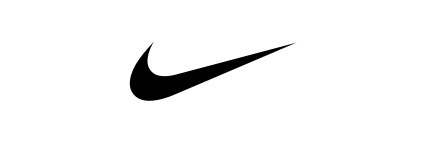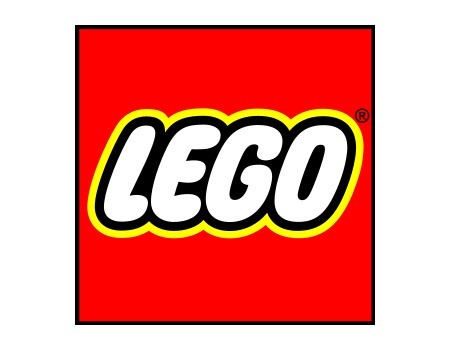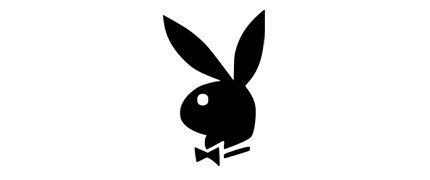Logo design is undoubtedly one of most challenging aspects of graphic design. It may seem easy at first glance but successful logos tend to have several characteristics in common. Those features are:
- simplicity
- uniqueness
- relevance
- memorable
- focus
- tradition (or not following trends).
 2. Make it unique. In a world full of swooshes, arcs, leaves and other logo clichés, this is easier said than done. The Nike logo is a tick or correct mark yet is instantly recognizable and unique.
2. Make it unique. In a world full of swooshes, arcs, leaves and other logo clichés, this is easier said than done. The Nike logo is a tick or correct mark yet is instantly recognizable and unique.
 3. Keep it relevant. When you’re designing a logo, think about the appropriateness of the symbol or typefaces you use. For example, a skull and crossbones will not work for a wedding planning business. The Lego logo uses bright primary colors and a child-friendly font – perfect for its intended audience.
3. Keep it relevant. When you’re designing a logo, think about the appropriateness of the symbol or typefaces you use. For example, a skull and crossbones will not work for a wedding planning business. The Lego logo uses bright primary colors and a child-friendly font – perfect for its intended audience.
 4. Make it memorable. Your logo design is a visual representation of what the company stands for. The logo will often only receive a quick look, so it needs to make a fast impression.
4. Make it memorable. Your logo design is a visual representation of what the company stands for. The logo will often only receive a quick look, so it needs to make a fast impression.
 5. Keep the focus and use one idea to make the design special. The Fed Ex logo features an arrow between the letters E and X, representing the idea of moving parcels from place to another.
5. Keep the focus and use one idea to make the design special. The Fed Ex logo features an arrow between the letters E and X, representing the idea of moving parcels from place to another.
 6. Aim for longevity. While many logos will be updated over their lifetime, its probably not a bad idea to design something which will not look dated after a year. Avoid “trendy” fonts and symbolism. The Coca-Cola logo is among the most recognized logos and brands in the world. The logo’s distinctive cursive script has not changed dramatically over its long lifetime.
6. Aim for longevity. While many logos will be updated over their lifetime, its probably not a bad idea to design something which will not look dated after a year. Avoid “trendy” fonts and symbolism. The Coca-Cola logo is among the most recognized logos and brands in the world. The logo’s distinctive cursive script has not changed dramatically over its long lifetime.
 These are, of course guidelines and pointers. All rules are made to be broken but it helps if you know the rules before breaking them. What other rules or guidelines would you add to this list?
These are, of course guidelines and pointers. All rules are made to be broken but it helps if you know the rules before breaking them. What other rules or guidelines would you add to this list?
Frequently Asked Questions about Logo Design
What are the key elements of a good logo design?
A good logo design should be simple, memorable, timeless, versatile, and appropriate. It should be able to communicate the brand’s message effectively and quickly. The design should be simple enough to be recognized instantly and should be memorable so that it sticks in the viewer’s mind. It should be timeless, meaning it should still be effective in 10, 20, or even 50 years. Versatility is important as the logo should work across a variety of mediums and applications. Lastly, the logo should be appropriate and reflect the company’s ethos.
How can I make my logo design unique?
To make your logo design unique, you should understand your brand thoroughly. Your logo should reflect your brand’s personality and its unique selling points. You can also experiment with different design elements such as colors, fonts, and shapes to create a unique look. Avoid using clip art or generic images and try to come up with an original design.
What are the common mistakes to avoid in logo design?
Some common mistakes to avoid in logo design include making the design too complex, using too many colors, relying on trends, and not considering versatility. A complex design can be difficult to reproduce and may not be easily recognizable. Using too many colors can make the logo look chaotic and unprofessional. Relying on trends can make your logo look outdated when the trend fades away. Lastly, not considering versatility can limit the use of your logo in different mediums.
How important is color in logo design?
Color plays a crucial role in logo design as it can convey different emotions and feelings. Different colors can represent different things. For example, red can symbolize passion and energy, blue can represent trust and reliability, and green can symbolize nature and growth. Therefore, you should choose colors that align with your brand’s message.
How can I test the effectiveness of my logo design?
You can test the effectiveness of your logo design by conducting surveys or focus groups. You can ask people about their first impressions of the logo, what they think the logo represents, and whether they find it memorable. You can also test the logo’s versatility by using it in different mediums and seeing how well it works.
Should I hire a professional designer for my logo design?
Hiring a professional designer for your logo design can be beneficial as they have the expertise and experience to create a high-quality and effective logo. However, if you have a tight budget, there are also online tools and resources that can help you create your own logo.
How can I protect my logo design?
You can protect your logo design by registering it as a trademark. This will give you exclusive rights to use the logo and prevent others from using a similar design.
How often should I update my logo design?
There’s no set rule for how often you should update your logo design. However, it’s generally a good idea to consider updating your logo if it no longer reflects your brand’s message or if it looks outdated.
Can I use more than one logo for my brand?
While it’s possible to have more than one logo for your brand, it’s generally not recommended as it can confuse your audience. It’s better to have one strong, memorable logo that accurately represents your brand.
What is the difference between a logo and a brand?
A logo is a visual representation of your brand, while a brand encompasses all the perceptions and experiences that people have with your company. Your logo is just one part of your brand, which also includes things like your company’s mission, values, and customer service.
Jennifer Farley is a designer, illustrator and design instructor based in Ireland. She writes about design and illustration on her blog at Laughing Lion Design.
